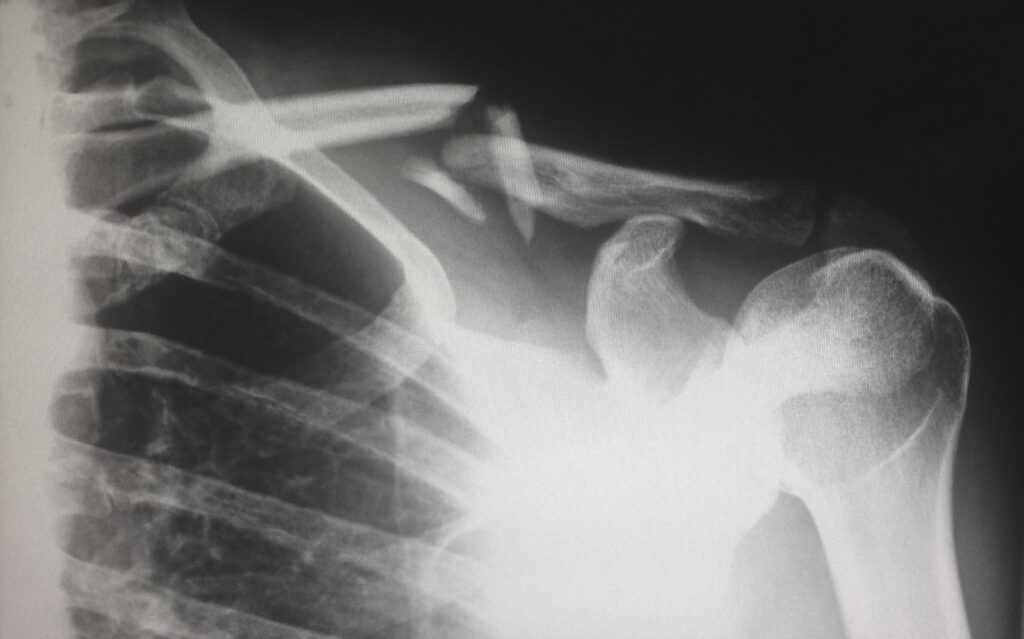A clavicle fracture is frequently referred to as a break in the collarbone. It commonly happens from falling onto an outstretched arm or on your shoulder or from a direct blow to the collarbone or clavicle itself.
Clavicle fractures account for 5% of all adult fractures. These type of fractures can cause a high degree of pain, as well as make it difficult to move the arm.
Symptoms frequently include pain at the site of injury, swelling at the collarbone, and a possible deformity felt just under the skin. A sharp pain may also occur during certain movements. Most of these fractures happen at the middle portion of the bone, but occasionally, the clavicle may break closer to the ribcage or sternum. The bone may further only partially break, such as a crack in the bone, or fully break.
Who’s More At Risk?
Playing in sports where there is a higher risk of falling – like hockey or figure skating – or those that involve contact and collision with other play – like football – place you at a higher risk of encountering a clavicle injury or fracture.
Treatment of a Clavicle Fracture
If a clavicle injury or fracture is suspected, book an appointment and consult with your doctor or another sports medicine specialist. They will perform various tests to diagnose the problem, as well as ensure that there is no nerve or blood vessel damage. An X-ray will also be performed to determine where the collarbone has broken.
At the time of injury, rest the affected arm and avoid moving it. Apply ice to aid in reducing swelling and pain.
Most often, you will be required to immobilize your arm in a sling. This allows time and adequate rest for the bone to heal. In many cases, the collarbone heals on its own – without surgery.
With clavicle injuries, a loss of strength is common. As such, physical therapy is frequently required. This helps in returning to your regular activities, as well as with regaining sufficient strength.
Yet, if the fracture is severe or it doesn’t heal properly even when immobilized, surgery may be necessary to promote proper healing. Surgery often involves a metal plate and screws to hold the bone in place. Once healing has occurred, the metal plate may be removed, but most often, it is left in place to avoid another invasive procedure.
As your injury heals, you’ll be required to attend regular follow-ups with your doctor or specialist. This will ensure you are on track. Strength and range of motion exercises in a rehabilitation program created by your specialist or physical therapist will further pave your road to recovery.
Massage may also play a role in promoting proper healing. Massage therapy improves range of motion, releases tension, and increases blood flow. Get back to your normal. Book your next appointment with Athlete’s Choice Massage today!






